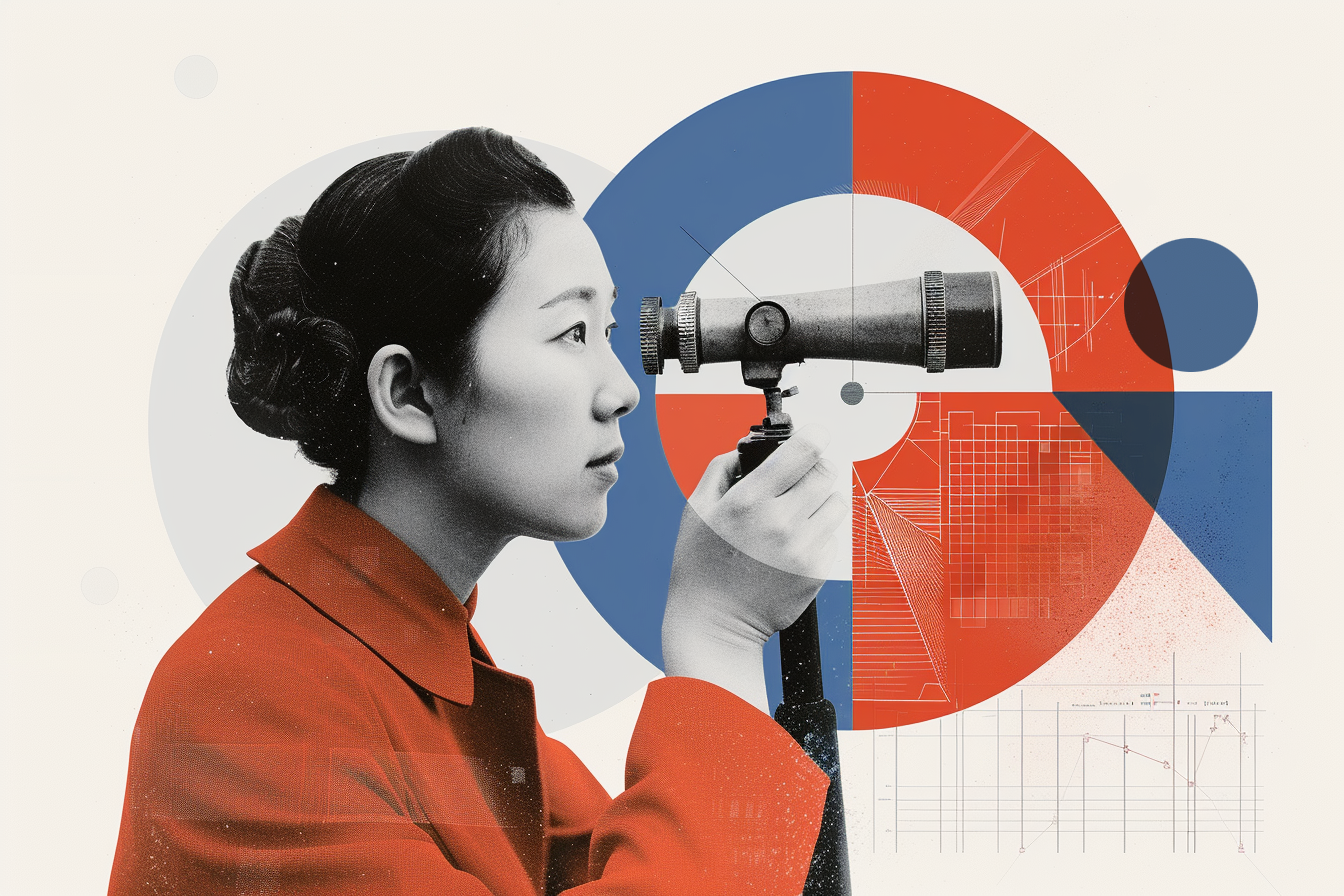How to Determine the Scope of Research | Examples & Tips
- Introduction
- What is the scope of a study?
- What is a research scope example?
- What is the purpose of the research scope?
- What considerations are relevant to the research scope?
- How do I write the scope in a report?
Introduction
The scope of a research project is one of the more important yet sometimes understated aspects of a study. The scope of the study explains what the researchers are examining and what environment they are studying.
This article explains the general purpose of the research scope, how it informs the broader study at hand, and how it can be incorporated in a research paper to establish the necessary transparency and rigor for your research audience.

What is the scope of a study?
Scientific knowledge very rarely, if ever, produces universal axioms. The boiling point of water changes depending on the amount of pressure in the air and, by extension, the altitude you are at relative to sea level when you boil water. What looks like polite behavior in a given culture may look rude in another. The definition of beauty is bound to change as people get older.
Similarly, research findings that aren't contextualized are less persuasive. If you are reading a study that looks at interactional patterns between parents and their children, it's important to have a clear sense of the theoretical lens, data collection, and analysis in order to determine the extent to which the findings are applicable across contexts.
In a nutshell, the scope tells you what the researchers are looking at and are not looking at. It provides the context necessary to understand the research, how it was conducted, and what findings it generated.
Conversely, establishing the bounds of the scope also clarify what research inquiries are not addressed in the study, ensuring that the study's argumentation is clearly grounded in the theory, data, and analysis.
What is a research scope example?
Let's imagine an example of a research study examining best practices for mental health. The research design centers on a survey study with a target population of college students with part-time jobs in addition to their coursework.
The researchers can focus on any number of things affecting mental health, including lifestyle factors such as sleep, socioeconomic factors such as income, and even influences further afield like the political alignment of friends and family.
Certainly, any of these things can have a profound impact on one's mental health. But when there are so many things to examine, it's necessary to narrow down what the research project at hand should examine.
The scope of the study can come down to any number of things, including the researchers' interest, the current state of theoretical development on the subject of mental health, and the design of the study, particularly how the data is collected. It might even boil down to influences like geographical location, which can determine the kind of research participants involved in the study.
All of these factors can inform an explicit description of the scope, which might look like this if found in the methodology section of a paper:
"In this study, the researchers focused on surveying college students over four months, roughly the same time frame as a semester at a university in the United States. Surveys were distributed to all college students, but this paper will narrow the data analysis to those students who reported having part-time jobs. This refined lens aligns with our interest in examining work-related factors contributing to negative mental health outcomes, as established in previous studies."
The above example of a study's scope highlights what the researchers focused on during the study and while analyzing the data. The researchers chose to study a narrow subset of their data to generate insights most applicable to their research interests. The researchers might also analyze the proportion of students that reported having part-time jobs to give a broader description of the study body, but they clearly focus on understanding the mental health of students with part-time jobs.
Moreover, the narrow scope allows the researchers to focus on a small number of elements in the relationship between mental health and work, which allows the researchers to make deeper contributions to this specific part of the conversation around students' mental health.
What is the purpose of the research scope?
Defining the scope of the study benefits both the researcher and their audience. Ultimately, establishing transparency in a research project focuses the data collection and analysis processes and makes the findings more compelling and persuasive.
Describing the scope can clarify what specific concepts should be used and examined during the course of the study. A good scope can keep the researcher focused on what data to collect and what ancillary developments, however interesting or useful, should be discarded or left to another study. Setting a clear scope can greatly help researchers maintain a coherent fit between their research question, collected data, and ultimate findings. Journal editors and reviewers often reject papers for publication because of a lack of fit between these important elements, which highlights the value of a clear research scope for conducting rigorous research.
In logistical terms, a well-defined scope also ensures the feasibility of a study by limiting the researcher's lens to a small but manageable set of factors to observe and analyze during the course of the study. Conversely, an unfocused study makes the collection of data a significant challenge when the researcher is left to document as much as possible, potentially gathering all kinds of data that may not be relevant to a given research question, while not gathering enough of the appropriate data that can address a research inquiry.
The research audience also requires an understanding of the scope of the study to determine the relevance of the findings to their own research inquiry. Readers of research bring their own assumptions and preconceived notions about what to look at in a given context. A well-written scope, on the other hand, gives readers clear guidance on what to look for in the study's analysis and findings.

What considerations are relevant to the research scope?
Besides the research area being studied, the scope of a study has a clear description of most of the following aspects. Understanding what makes rigorous research and what readers of research look for in a well-crafted study will be useful for describing the scope of a research project.
Target population
The kind of research participants you are including in a study informs what theories are relevant and how the study should be designed. Are you researching children, young adults, or older professionals? Do they belong to a specific culture or community? Are they connected or related to each other in some way or do they just happen to belong to the same demographic?
Because qualitative, social science research seldom yields universal theories, it's important to narrow the scope of a study down to a specific set of the population. The more specific the scope, the more that the findings and resulting theoretical developments can be appropriately contextualized and thus inform how other researchers can build on those insights.
Geographical location
The geographical location covered by the study provides a necessary context for any study in the social sciences. Even if you narrow the targeted population to a specific demographic, what is true for that population in one country or region may not be true for another.
As a result, a scope that describes the location of the study explains where the findings are most relevant and where they might be relevant for further study.
Data collection
If you are conducting observational or ethnographic research, it may seem like you are facing a firehose when it comes to collecting data. Even interviews, focus groups, and surveys can provide a torrent of data, much of which may not be relevant to your inquiry if the study design isn't refined.
Without a sufficiently defined scope that identifies what aspects of the world you are looking at, the data you collect may become unmanageable at best. When crafting your study, develop the scope to determine the specific topics and aspects worth exploring.

How do I write the scope in a report?
In academic publishing, reviewers and editors need a clear understanding of the scope of the study in a manuscript when evaluating the research. Despite its importance, however, the scope doesn't necessarily have its own explicit section in a research paper.
That said, you can describe the study's scope in key areas of your research writing. Here are some of the important sections in a typical research paper for academic writing where a description of the scope is key.
Literature review
Any study disseminated for academic publishing requires a thorough understanding of the current research and existing theories that are relevant to your study. In turn, the literature review also defines the aspects of the phenomenon or concepts that you can study for the purpose of theoretical development.
Rely on the key theories in the literature review to define a useful scope that identifies key aspects of the theoretical framework that will inform the data collection and analysis.
Problem statement
A well-crafted problem statement generally sets the stage for what knowledge is missing and what novel and interesting insights can be uncovered in new research. As a result, a clear understanding of the research scope helps define the problem that a new research project seeks to address.
When incorporating a problem statement in your research paper, be sure to explicitly detail the rationale for problematizing the phenomenon you are researching.
Research question
Research questions define the relationships between the relevant concepts or phenomena being explored, and thus provide evidence of a scope that has been thoughtfully planned. Use the wording of your research question to highlight what is the central focus and, thus, the scope of the study.
Methods
At minimum, the scope of the study should narrow the focus of data collection and data analysis to the study of certain concepts relevant to addressing the given research question. Qualitative research methods can often result in open-ended data collection that can yield many insights, only a few of which may directly address the research inquiry.
Narrowing the collection of data to a set of relevant criteria can help the researcher avoid any unnecessary rabbit holes that might complicate the later analysis with irrelevant information.
Limitations
Research scope and limitations go hand in hand because, together, they define what is studied within a research project and what is not. Moreover, a good description of the study's scope can also provide direction, by way of the description of limitations, about what inquiries other researchers could pursue next.





